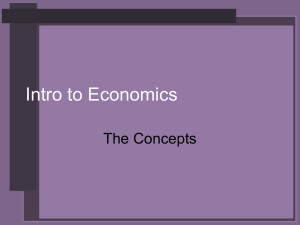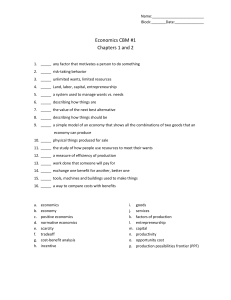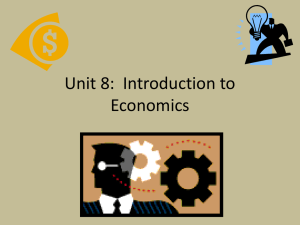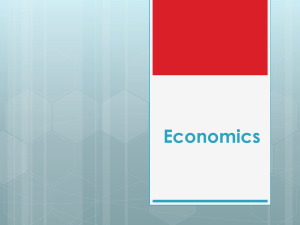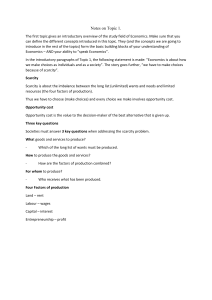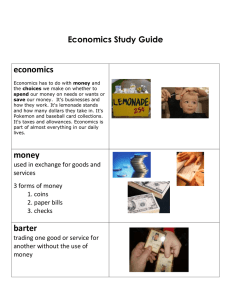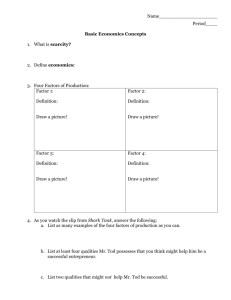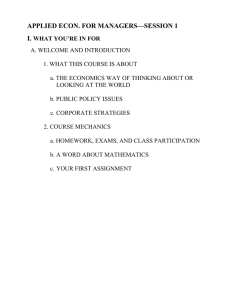Unit 8: Introduction to Economics
advertisement
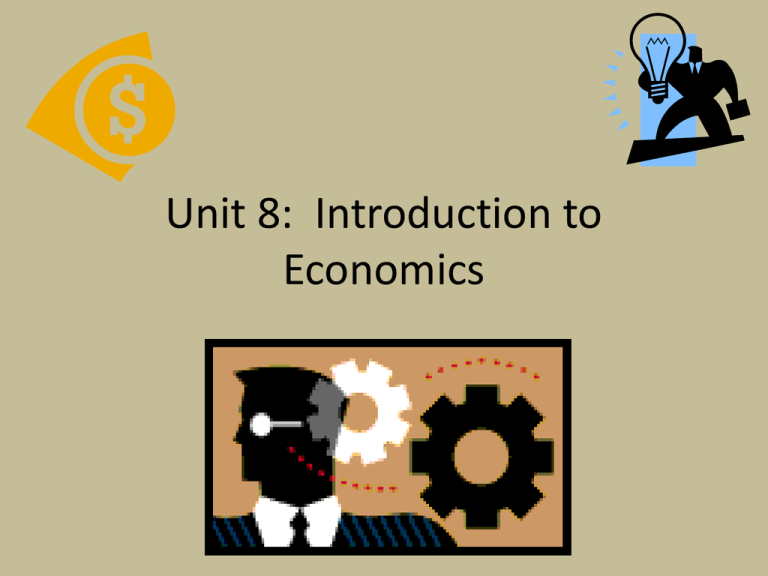
Unit 8: Introduction to Economics The Basics of Economics I. What is Economics? • The study of how we make decisions in a world where resources are limited • We have many needs and wants, but we have to make decisions because of scarcity II. Economic Decision Making • Because of scarcity, every government, business, and individual has to answer 3 questions: 1. What to produce? 2. How to produce? 3. For whom to produce? III. Economic Models • To help us make economic decisions, we will use economic models – Ex. Charts, graphs Types of Cost I. Economic Decision-Making • Every decision made has some type of cost or consequence II. Choices • Trade-off: the alternative you face if you decide to do one thing rather than another • Ex. You can go to the movies or study for your economics test • Opportunity Cost: the cost of the next best alternative use of time and money when choosing to do one thing rather than another • Go to the movies—do poorly on your test, fail the EOC • Study for the test—miss the fun with your friends III. Other Types of Cost • Fixed costs: Expenses that are the same no matter how much or how little you produce • Ex. Mortgage payments, property taxes • Variable costs: Expenses that change when the # of items produced changes • Ex. Salaries, materials, light bills • Total Costs: fixed costs and variable costs added together • Fixed + Variable = Total Class Starter 1. Who is responsible for paying the cost of incarcerating criminals? 2. Which set of laws simplified Roman Laws? 3. List some examples of civic duties. 4. Which amendment contains the Equal Protection Clause? Factors of Production I. Producing Goods and Services • We produce goods and services for people to buy – Goods: tangible products that we use to satisfy our wants and needs – Services: work performed by a person for someone else • Gross Domestic Product (GDP): the total $ value of all final goods and services produced in a country during a single year II. Factors of Production • Resources necessary to produce goods and services • Land, labor, capital, entrepreneurship • Land (natural resources): things we find in nature that make production possible – Ex. Trees, animals, water, air • Labor: human effort directed toward producing goods and services – Ex. Doctors, lawyers, teachers, plumbers, cashiers • Capital: previously manufactured goods used to make other goods and services – Ex. Sewing machines, projectors, pens, hammers, $ • Entrepreneurship: the ability to start a new business – Entrepreneur—someone who starts a business; person has to be innovative and willing to take risks to make the profit
